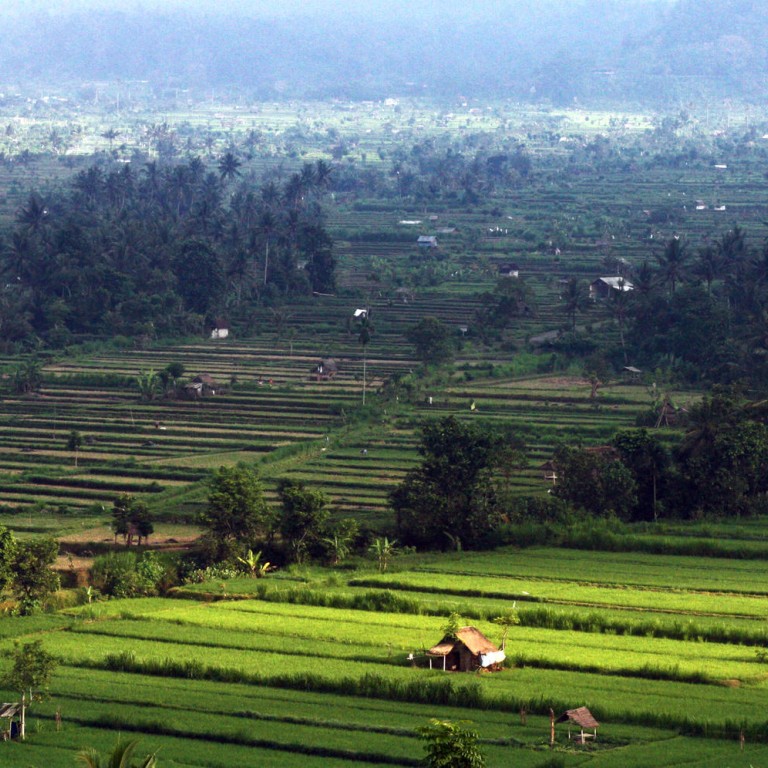
Lessons Balinese cooking
A is on the stove; a pivotal ingredient in Balinese cuisine, the paste of chillies, garlic, shallots, candlenut, nutmeg, ginger, turmeric, palm sugar, shrimp paste and lemon grass bubbles away.
But you won't find bumbu being used in most of the tourist restaurants around the island, warns our teacher, Swiss chef Heinz von Holzen, who brushes off our guesses at what Bali's indigenous dishes might be. Forget - mixed vegetables with peanut sauce, originally a Javanese dish. and - fried rice and fried noodles - are a Chinese import. And some form of satay, meat on a stick, is pretty much found in every major global cuisine.
Though as with many cuisines it's about getting four flavours in the right balance - sweet, salty, sour and hot - Bali's cuisine is different and if you don't know what you're looking for, how are you going to find it? A cooking class is a good first foray into the world of fresh spices that Balinese food blooms from. Here are some choices; all classes cook meals as a group rather than individually.
Jalan Raya Gelumpang, Gelumpang Village, Amlapura, Karangasem,
tel: +62 828 9703 0098
This earthy restaurant looks out over emerald green paddies and up to majestic Gunung Agung, Bali's highest peak - but don't let the incredible view distract from the encyclopaedic knowledge that Western-trained chef Penelope Williams shares with her students.
Whether she's getting you to taste a raw peanut for the first time (it tastes, as the name suggests, just like a green pea) or explaining how to tuck grated fresh turmeric into your belly button for an upset tummy, you'll learn something new here on the ingredient front alone.
Then there are the dishes, usually five or six, which we prepare though the ingredients are mostly already peeled, chopped and sliced. Sip a glass of the snake fruit beer after you fold your banana leaf packages of , or spiced fish fillet steamed in banana leaf. And forget using implements when it comes to tossing Balinese salads; our , or fern tip salad with coconut and red beans, is mixed by hand.
Classes usually begin with either a farm walk, local market visit or a boat trip with a fisherman, and cost 800,000 rupiah (HK$650).
Jalan Pratama, Tanjung Benoa,
tel: +62 361 771 256
Heinz von Holzen's classes are dizzying. The long-time Bali-based chef and author of five Balinese cookbooks is in turn stern, hilarious, informative and entertaining.
Von Holzen takes a scientific approach to his cooking, which is reassuring if you don't know your galangal from your ginger. Everything is prepared with military precision here - you won't touch a knife, but you will get a chance to grind spices in the open-faced mortar and pestle typically used in Bali, or have a go at stir-frying in the open-air kitchen. You'll make up to two dozen dishes.
Do take the early morning market tour, which takes in a wet market as well as Jimbaran's fish market, where most of the island's restaurants source their seafood. (Classes with a market visit cost 1.03 million rupiah.)
Jalan Pantai Batu Bolong, Canggu Beach,
tel: +62 361 473 1701
Hotel Tugu on Bali's west coast offers classes in a replica of an Indonesian or streetside restaurant with Ibu ("mother") Soelastri from Malang in East Java. She speaks little English; this is more about watching her in action, although another hotel staffer will help translate your queries.
You'll select five dishes to prepare, which the class will make from scratch - my favourites are or banana stem soup, and , Balinese shredded chicken. Although you'll get recipes at the end, Soelastri does everything from memory and taste.
I love the authenticity combined with a lack of pretension here; while purists might recoil, "chicken powder" or stock powder, is one of the ingredients Soelastri uses with feisty chef's pinches - these days, it's clearly part of the Javanese and Balinese cooking vernacular.
Classes can include a visit to Pasar Badung in Denpasar (1.04 million rupiah with a market visit.)
Jalan Bisma, Ubud,
tel: +62 361 973 282
Oleg knows the women serving or rice with a mixture of dishes to go - "It's like your McDonald's," he quips. He'll tell you exactly how many cups of coffee you get from a bag and that you should buy vanilla in Bali, but avoid "saffron" - it's more likely to be safflower.
Back at the Honeymoon Guesthouse-based school, he leads the group through its paces, ingredients ready to go. My favourite dish here is an anchovy sambal, a crunchy concoction whose star is the deep-fried, tiny fish.
Meats such as chicken, pork and duck are usually only eaten by Balinese on ceremonial days, Oleg says. Everyday fare is more likely to include anchovies, tofu, tempe or smoked fish.
Still, whatever's on the menu, a bumbu will likely be there to fire up the dishes. (Classes with a market visit cost 300,000 rupiah.)
